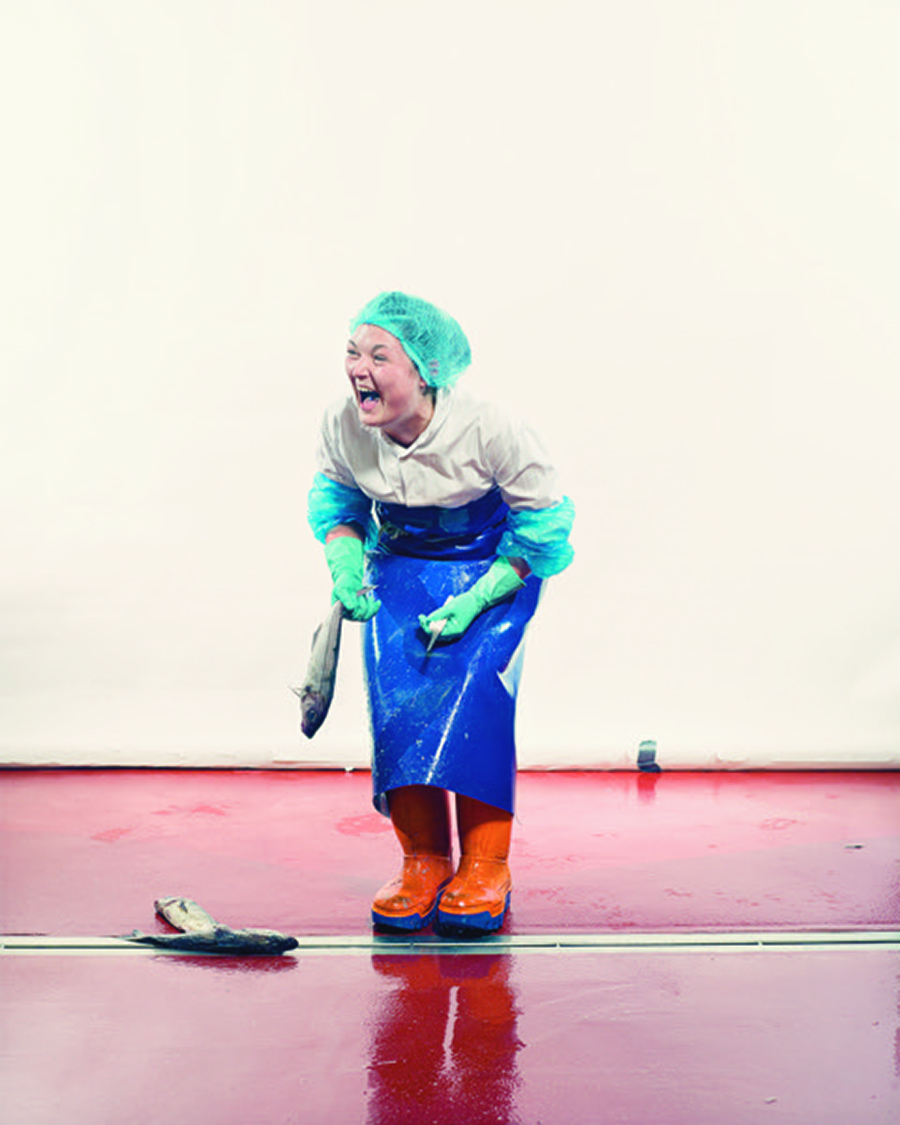
Louise of Aberdeen © Craig Easton
Fisherwomen
Craig Easton
Craig Easton’s series Fisherwomen follows the historic route of the UK herring fleet, telling a compelling and critical tale of a unique phenomenon in the history of British women at work. From the early 19th to mid-20th century, the herring fishery was one of the most important industries in Scotland. As the fleet tracked the annual migration of the fish, the “Herring Lassies” — a unique band of female-only migratory workers — would mirror the journey on land, stopping in each port to work along the way.
The tradition of ‘going to the herring’ was passed from mother to daughter for generations. Easton’s Fisherwomen examines the historical and contemporary importance of women to the fishing industry through connecting today’s workers to the long tradition of English smokehouse workers. His series shines the spotlight on the women themselves, who today mostly work behind closed doors in fish processing factories, smokehouses, and small family firms up and down the east coast.
Pescadoras: Craig Easton
La serie Fisherwomen de Craig Easton sigue la ruta histórica de la flota de arenques del Reino Unido y cuenta una historia convincente y crítica de un fenómeno único en la historia de las mujeres británicas en el trabajo. Desde principios del siglo XIX hasta mediados del siglo XX, la pesca del arenque fue una de las industrias más importantes de Escocia. A medida que la flota rastreaba la migración anual de los peces, las “Herring Lassies”, una banda única de trabajadoras migratorias solo para mujeres, reflejaban el viaje en tierra, deteniéndose en cada puerto para trabajar en el camino.
La tradición de “ir al arenque” se transmitió de madre a hija durante generaciones. Easton’s Fisherwomen examina la importancia histórica y contemporánea de las mujeres en la industria pesquera conectando a los trabajadores de hoy con la larga tradición de los trabajadores ingleses de los ahumaderos. Su serie destaca a las propias mujeres, que hoy en día trabajan principalmente a puerta cerrada en fábricas procesadoras de pescado, ahumaderos y pequeñas empresas familiares a lo largo y ancho de la costa este.
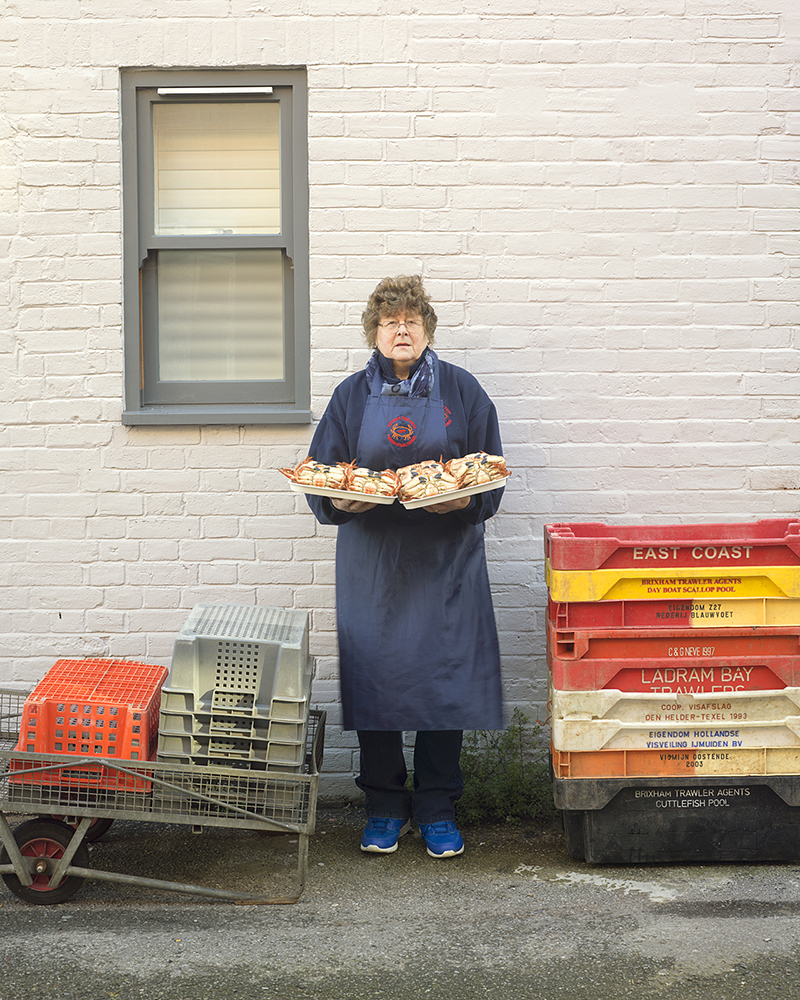
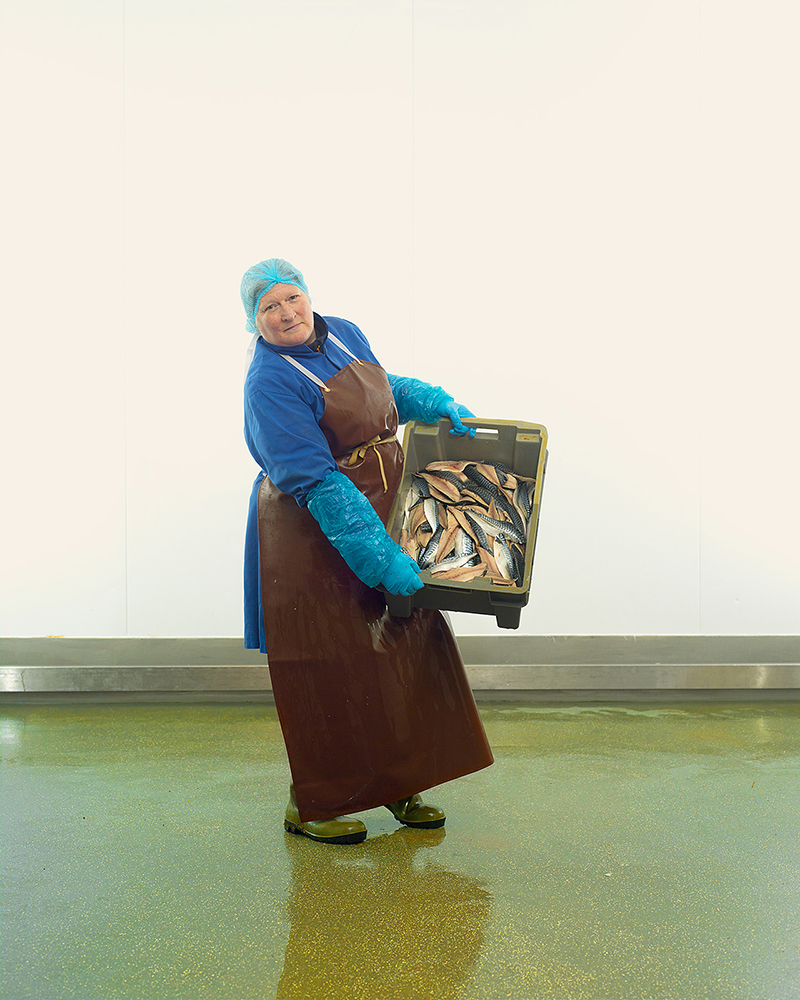
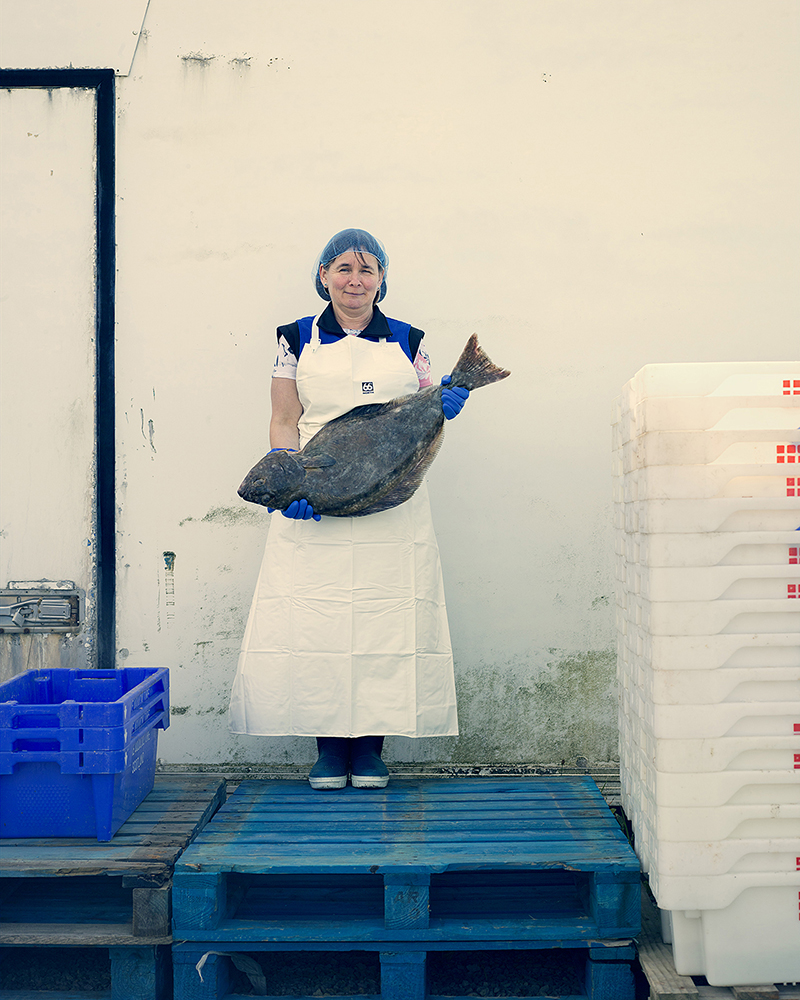
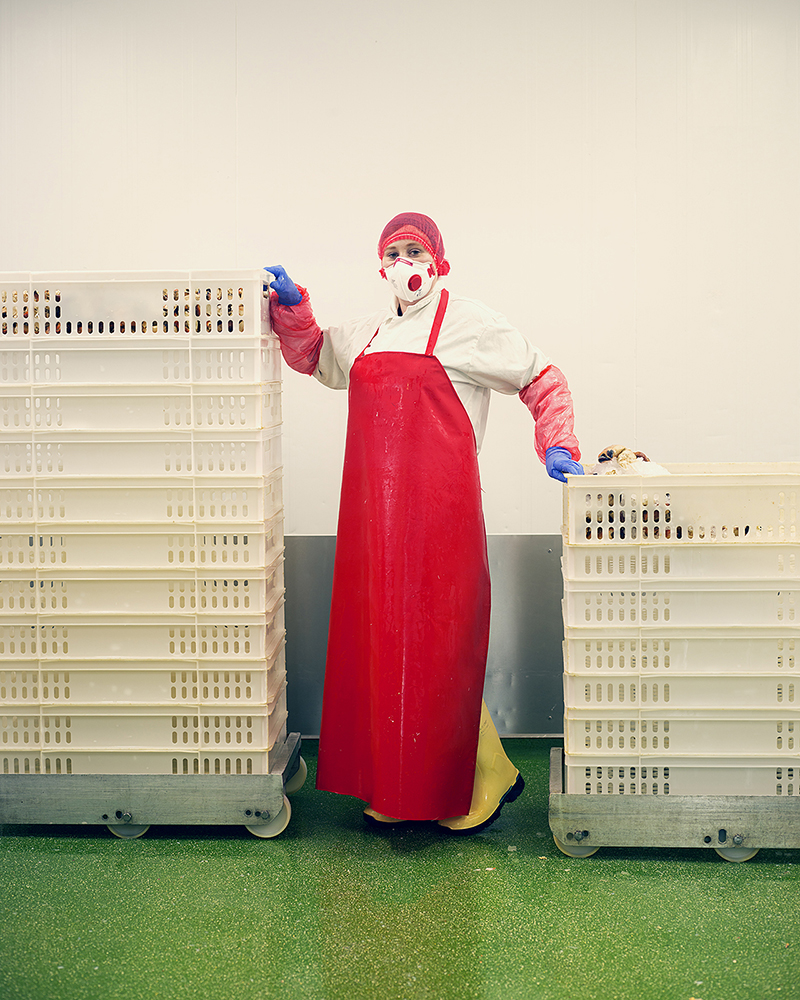

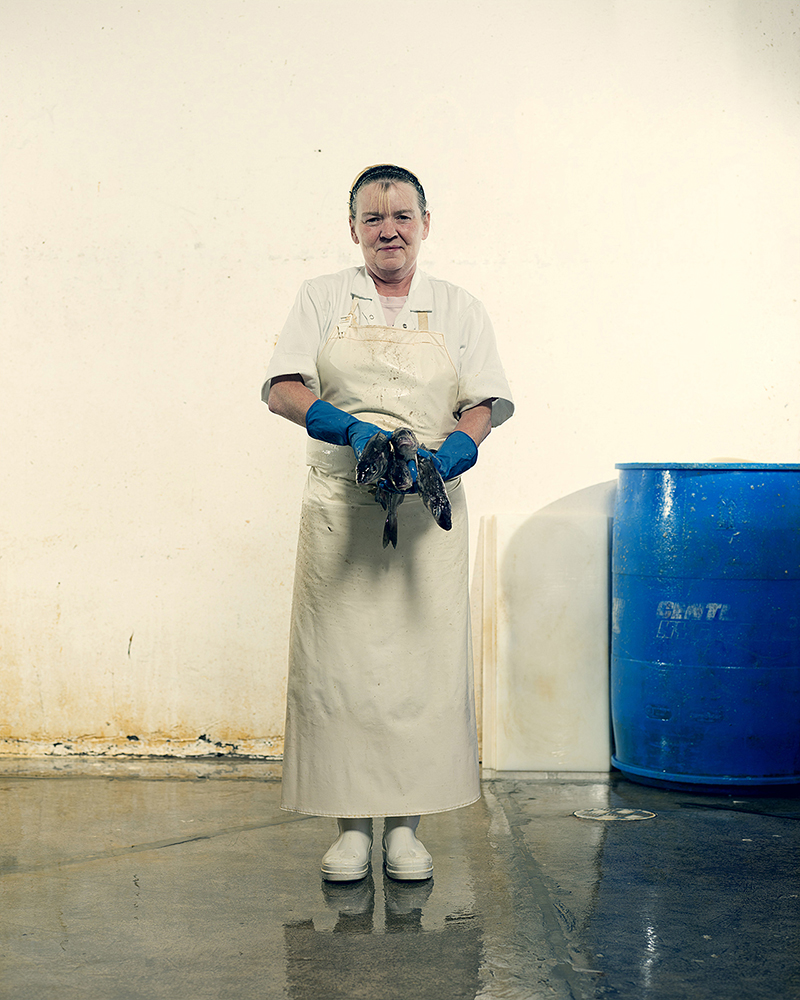
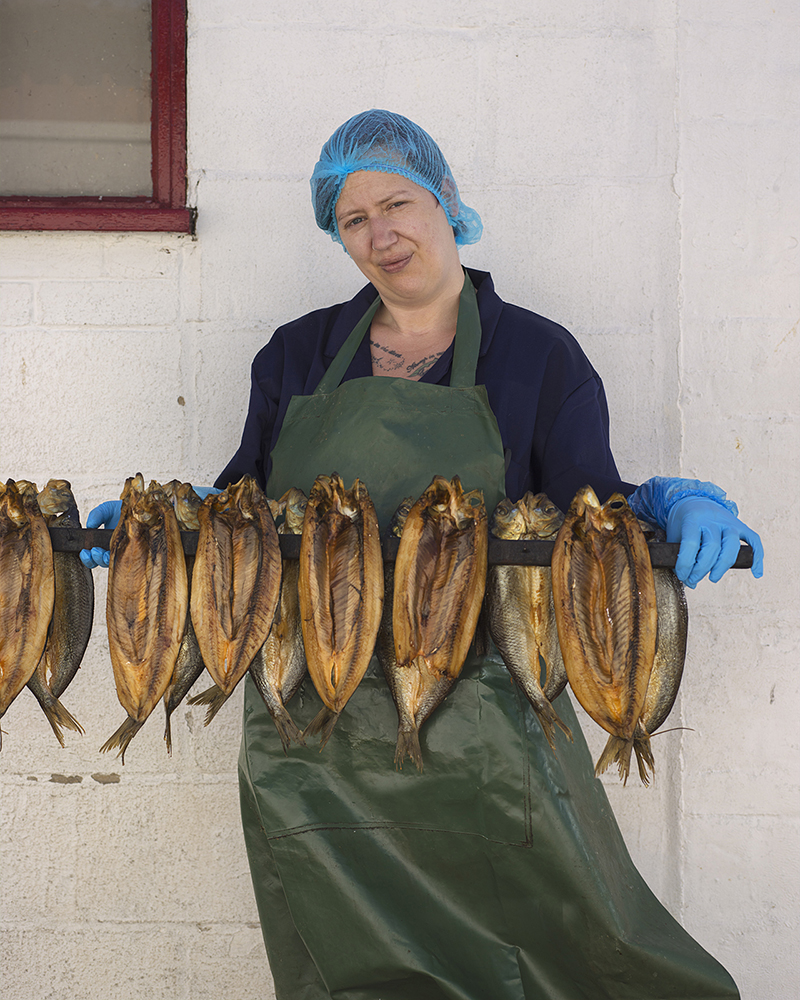
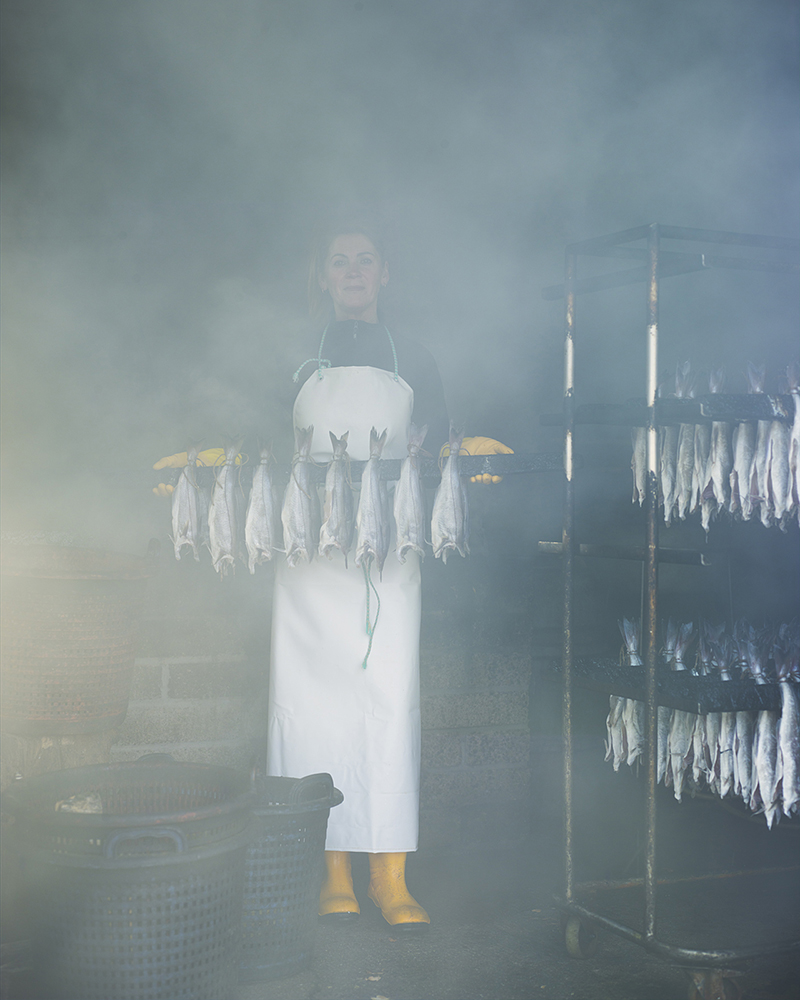
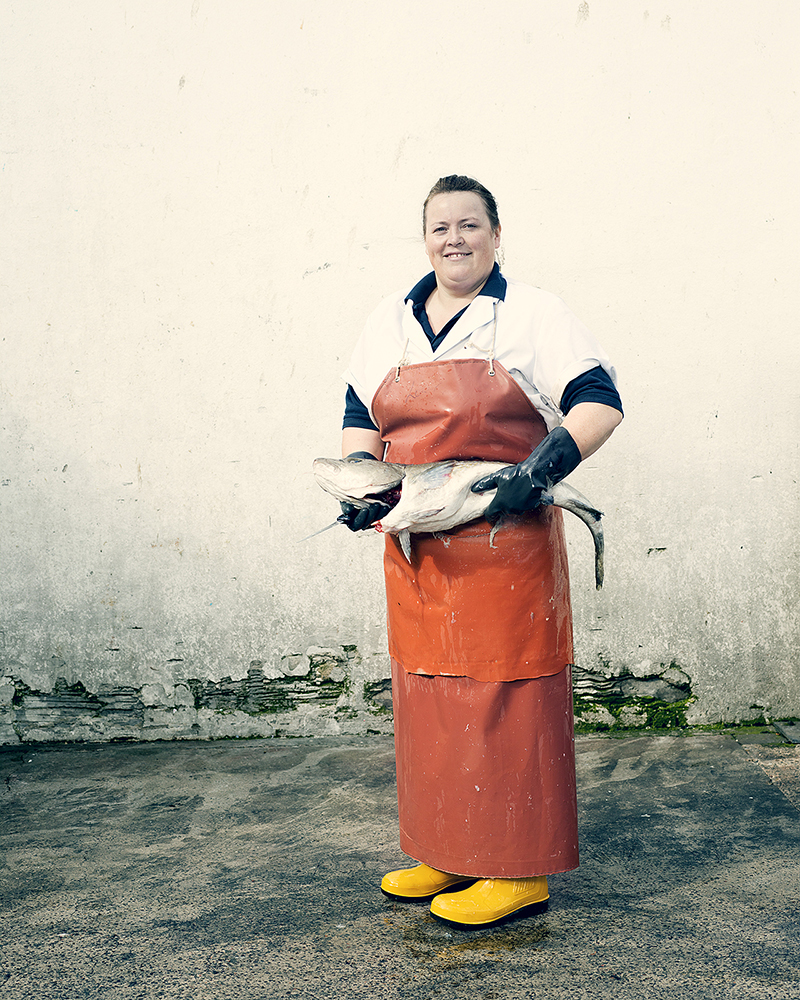



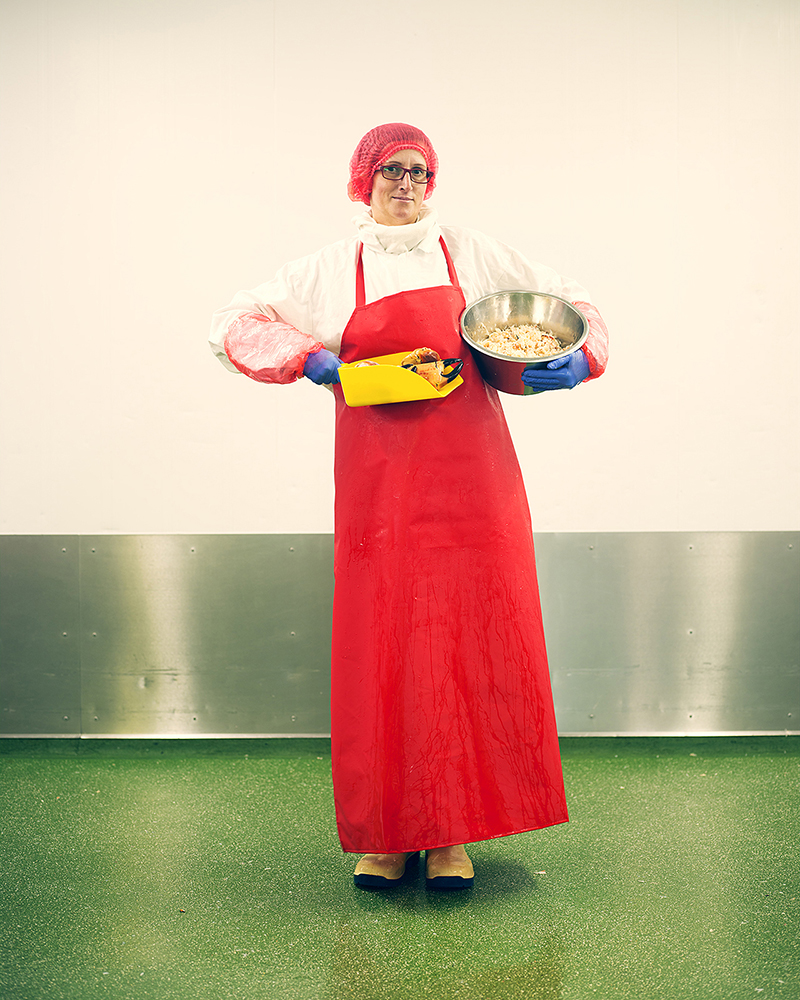

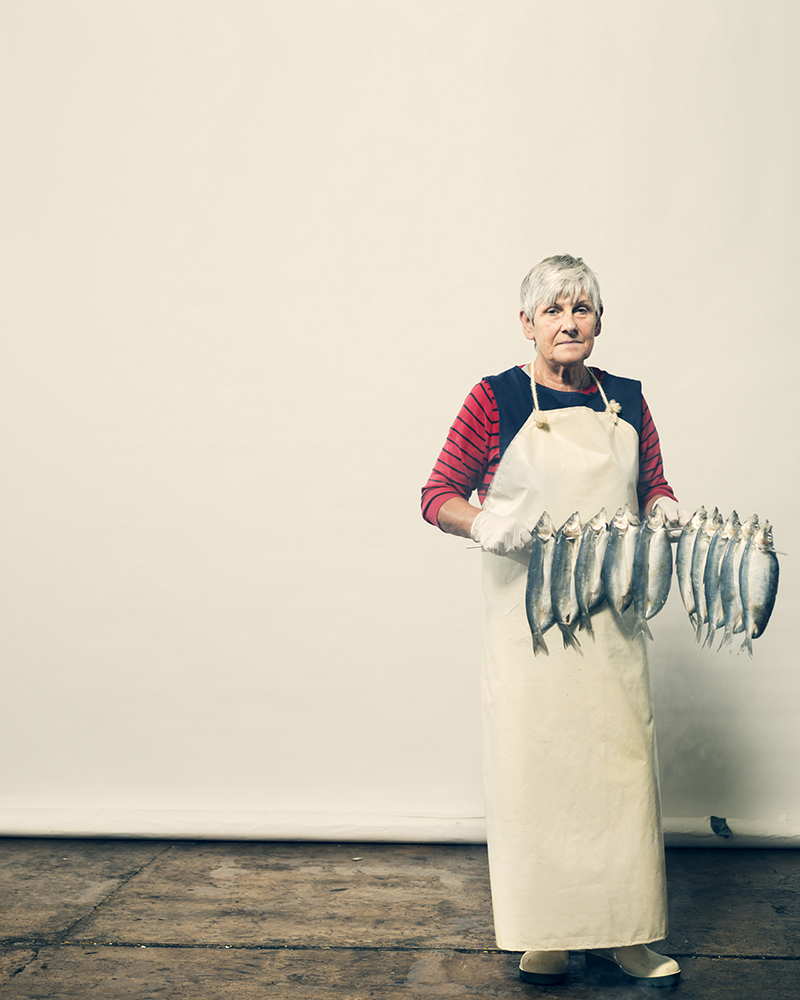
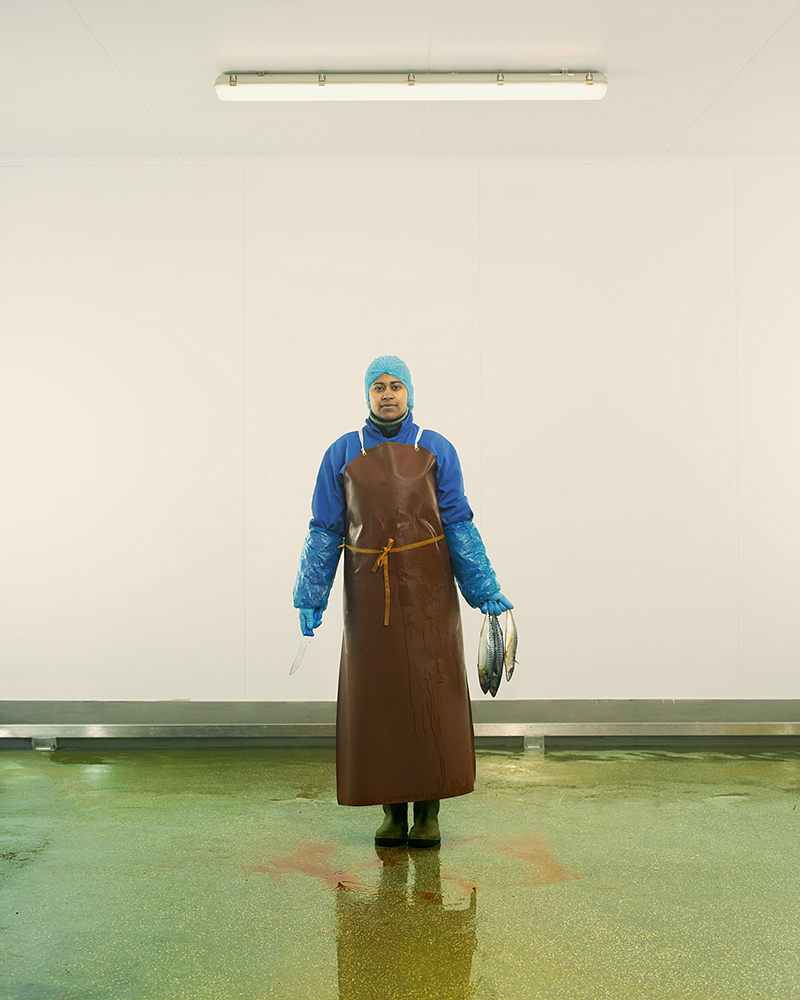
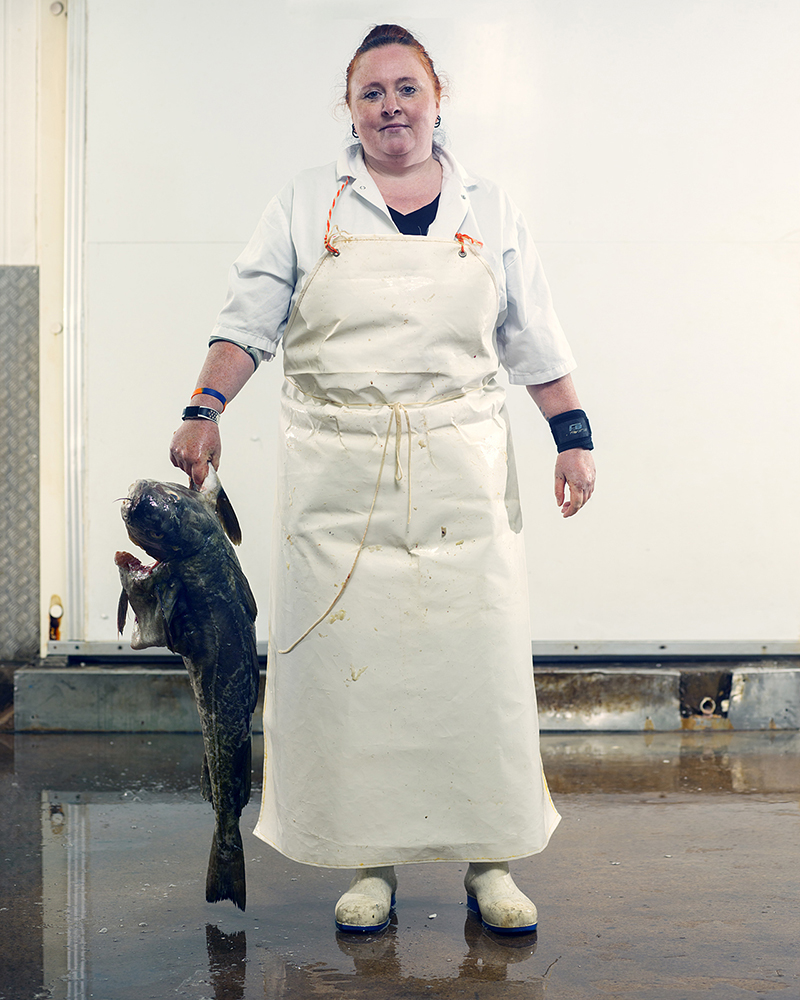
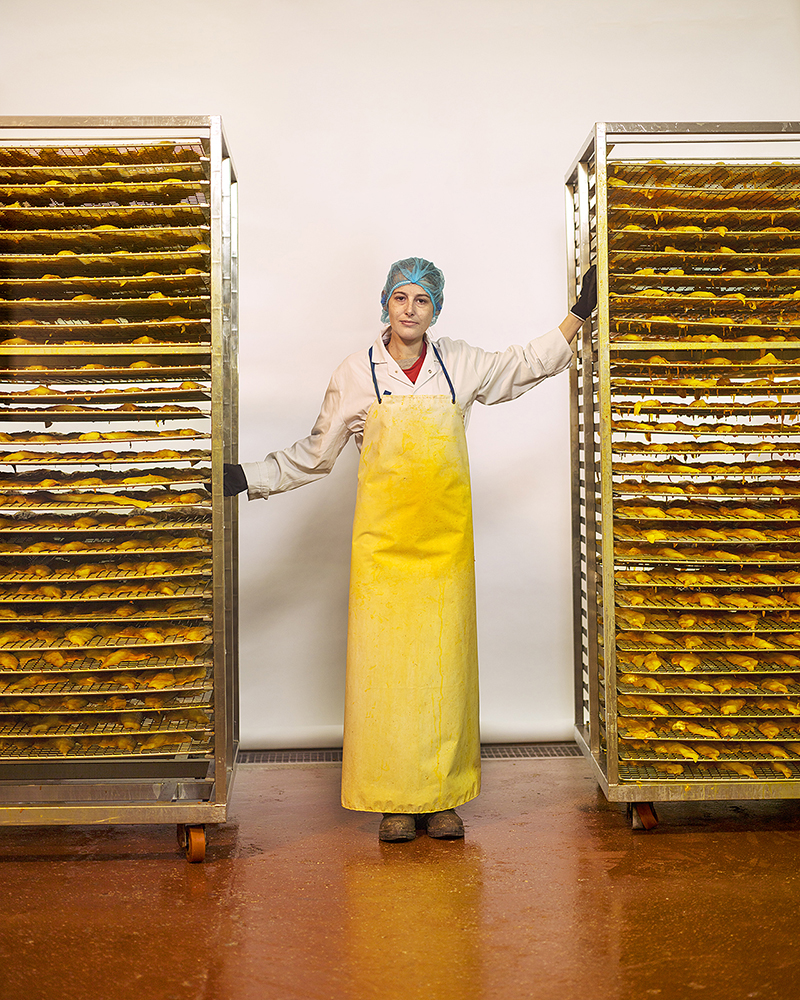

An interview with Rose Ely of Cromer
An interview with Dawn Walton of Hull

Paulina of Orkney©
Craig Easton
Paulina
Shellfish Processor
“It’s not the nicest job in the world, but it’s where I belong. People can’t believe it when I go out and I’m dressed up, and they say ‘oh what do you do for a living?’ And I tell them. And they’re like, ‘really?’
Yeah, they don’t get it because they see it as a male oriented job, on the shop side and the filleting and stuff, but they forget how many years ago all them herring girls were there. I think we’re more able than men, and more gentle.”
“No es el mejor trabajo del mundo, pero es donde pertenezco. La gente no puede creerlo cuando salgo y me disfrazo, y me dicen ‘oh, ¿a qué te dedicas?’ Y yo les digo. Y dicen, ‘¿en serio?’ Sí, no lo entienden porque lo ven como un trabajo orientado a hombres, en el lado de la tienda y el fileteado y esas cosas, pero olvidan cuántos años atrás eran todas esas chicas arenque allí. Creo que somos más capaces que los hombres y más amables.”
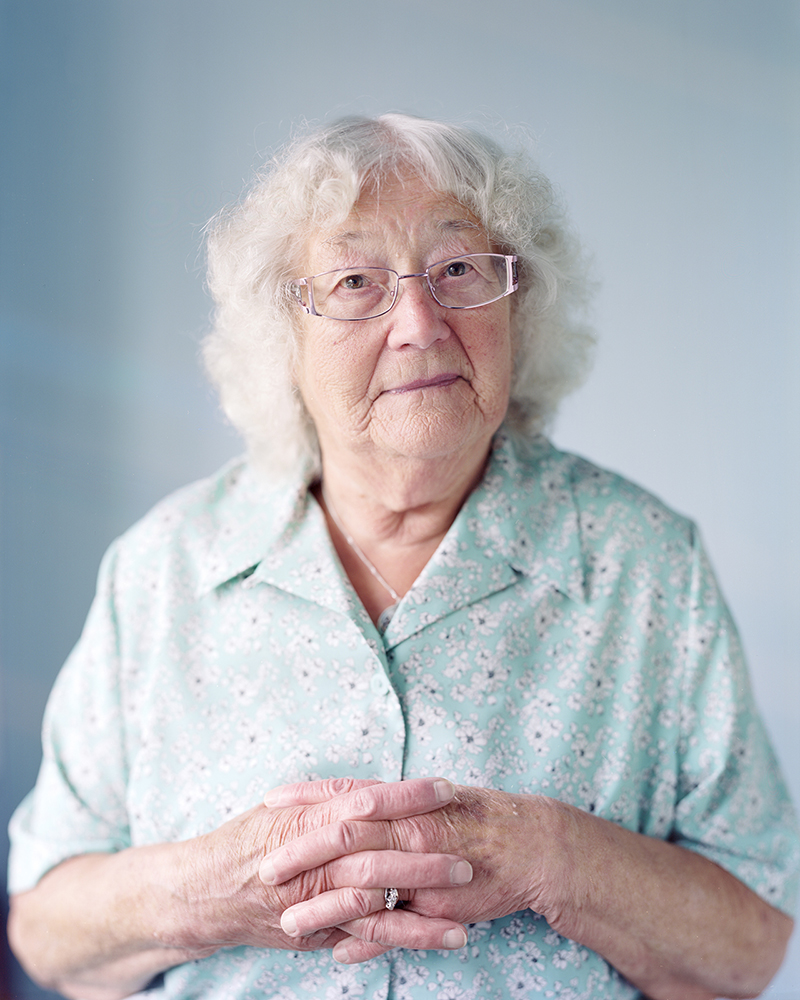
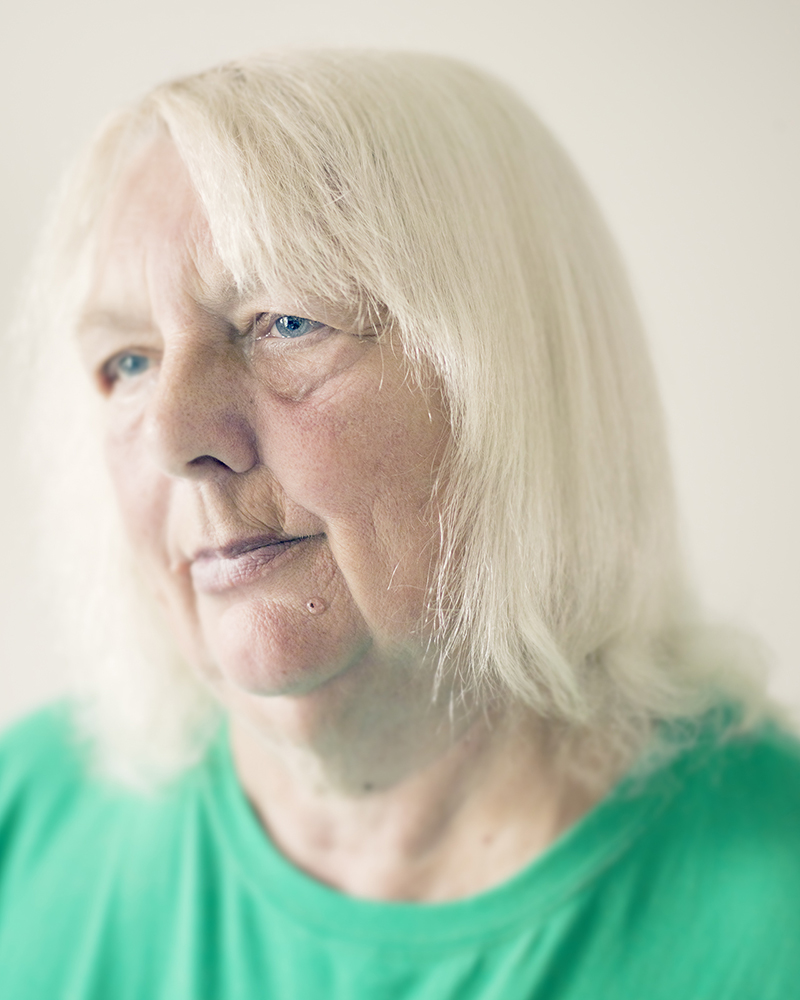
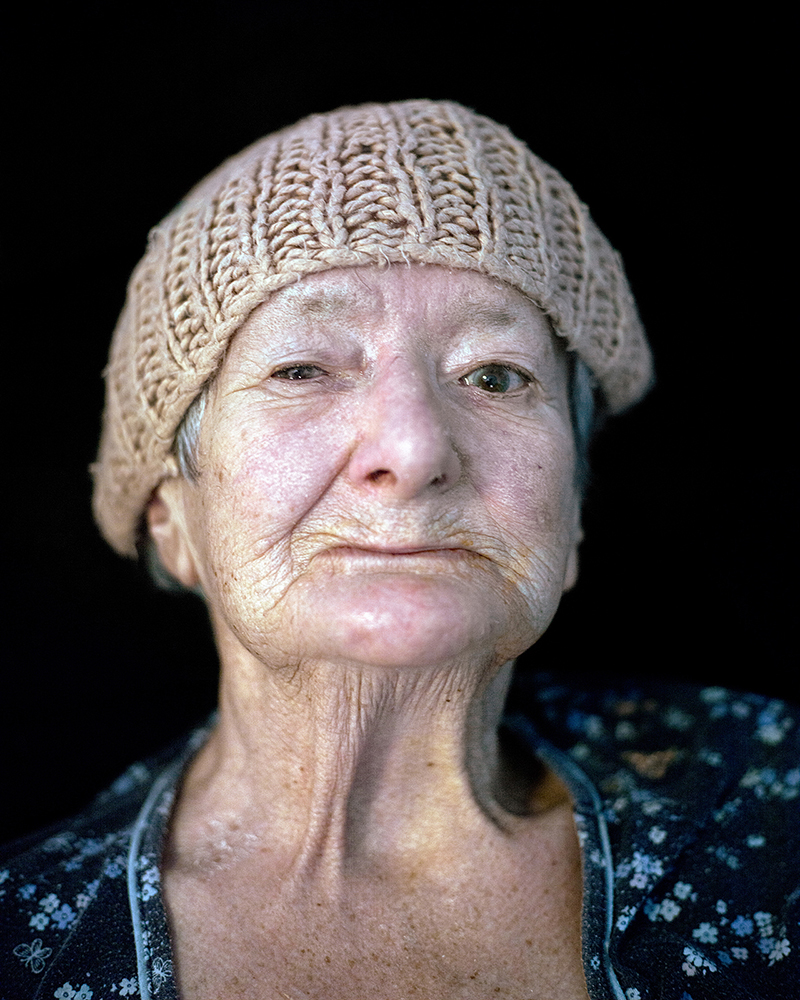
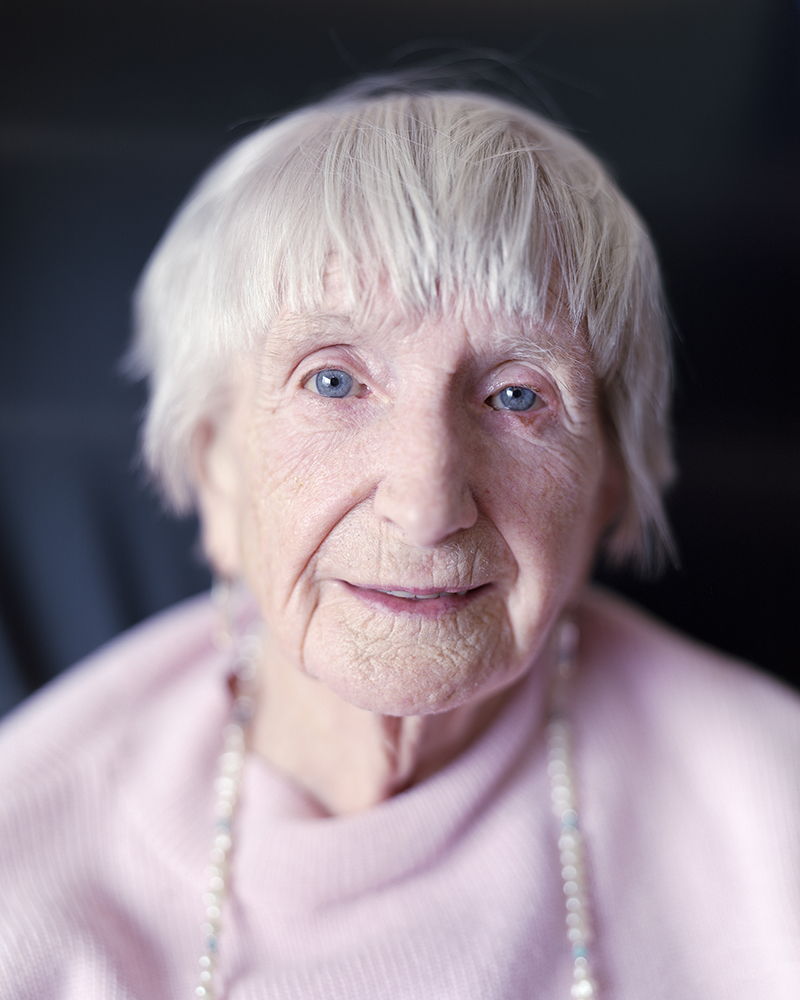

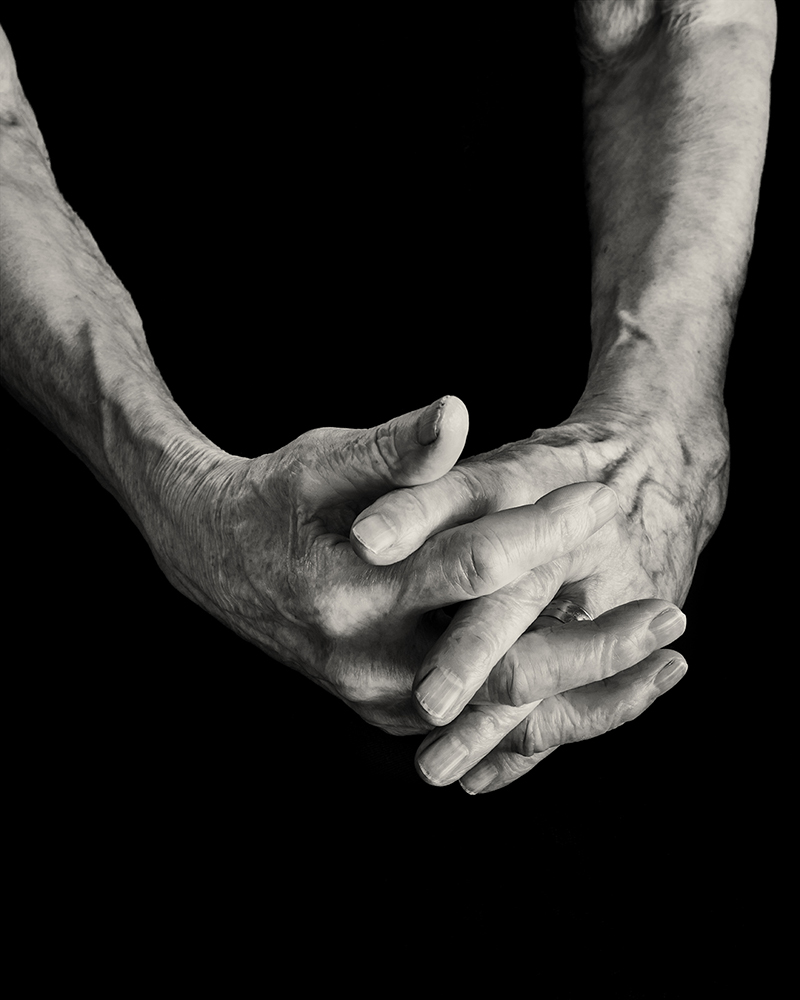
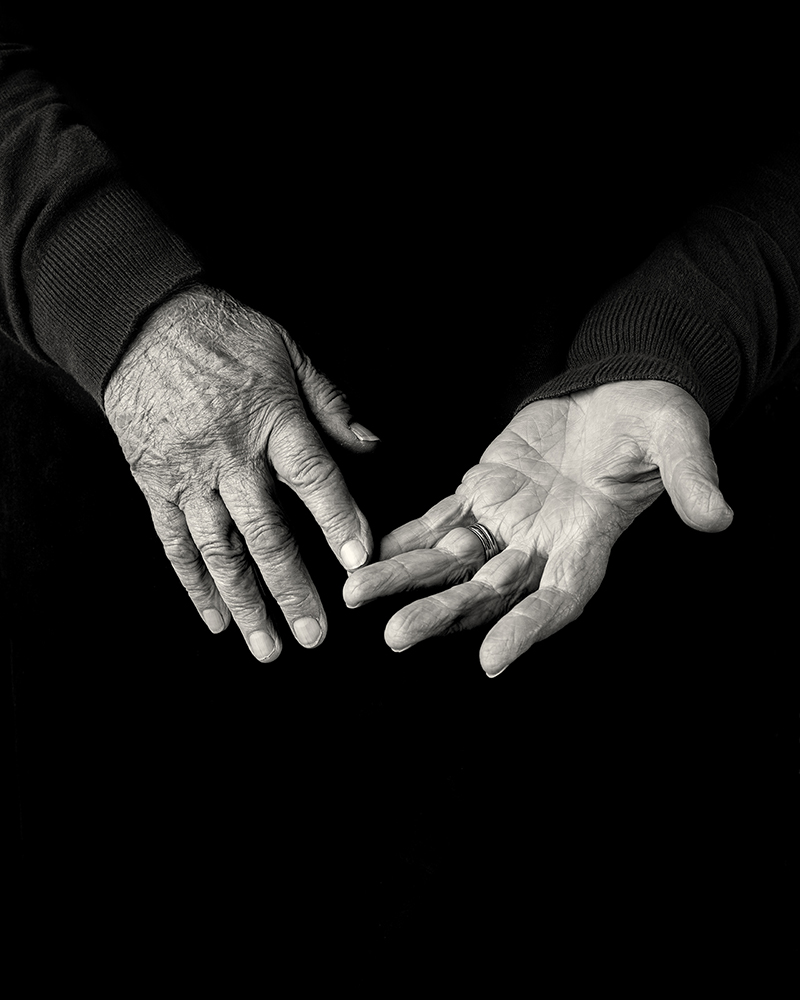
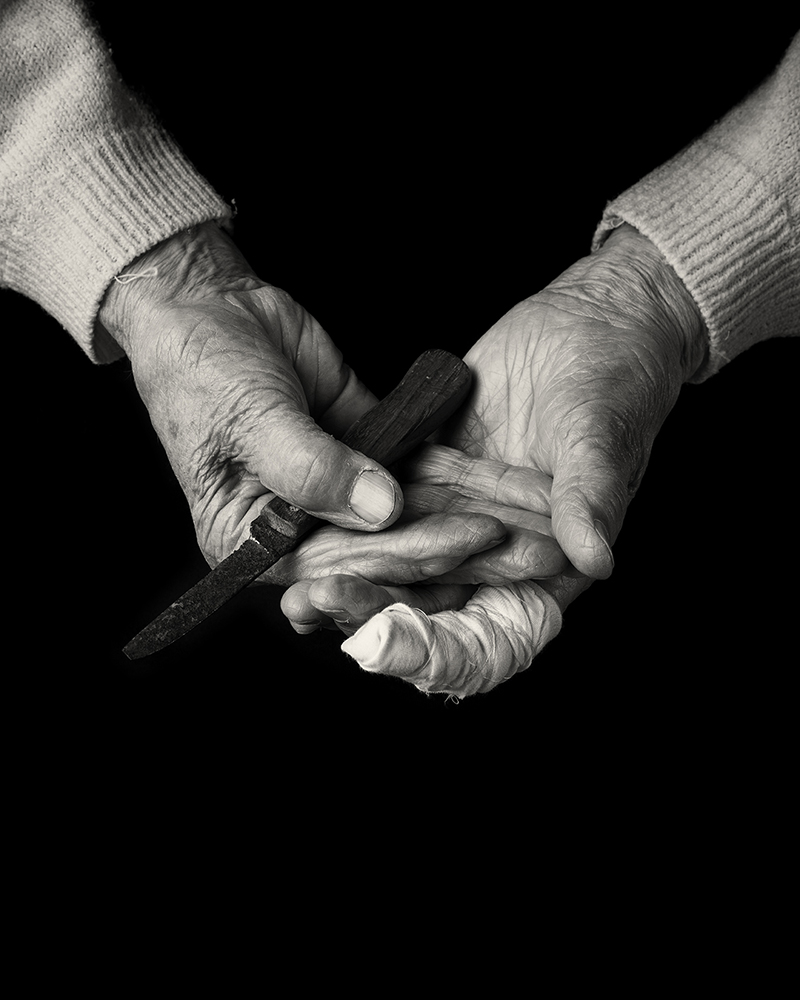
An interview with Sheila of North Shields
An interview with Mary Williamson
An interview with Edna Davidson of Yarmouth
An interview with Agnes Bowie Shetland
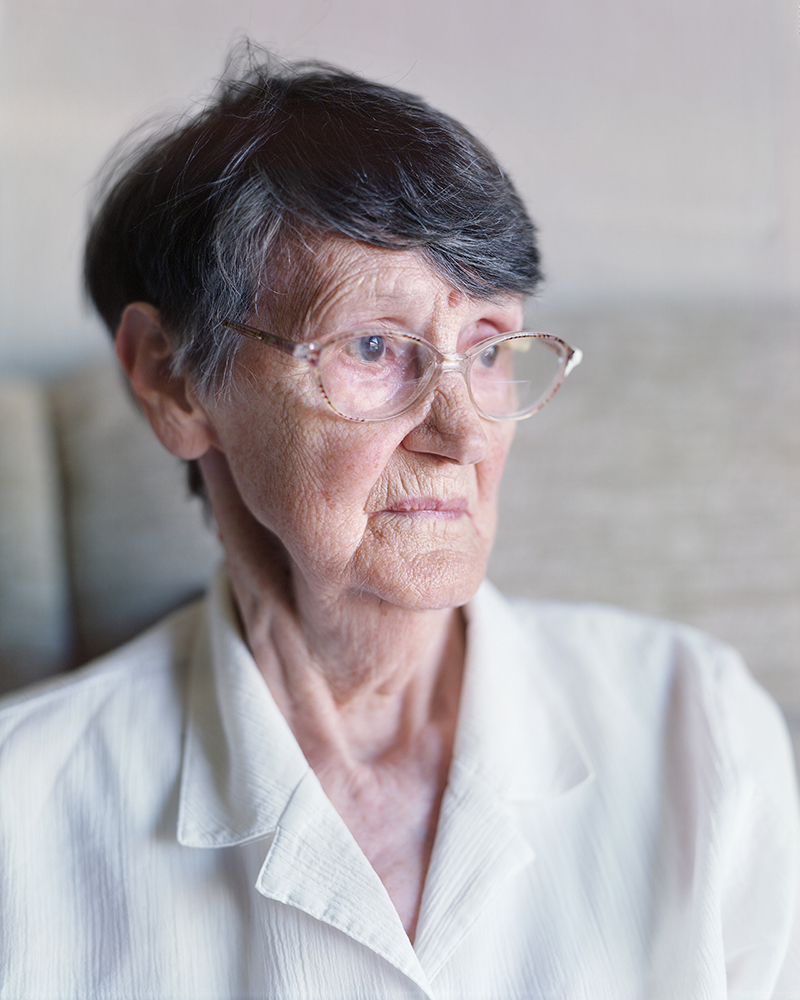
Rita McNab © Craig Easton
Rita
“I’ll tell ye it was very hard work, but I enjoyed it. I enjoyed every minute o’it. And I ate plenty o’it. You’d never get hungry if you were working on the herring. It was traveling work. I gid tae Isle of Man, Lerwick, Lowestoft and Yarmouth, and Jim’s mother gid tae Stornoway, Fraserburgh, Ireland. We had nothing. Nothing. We had nae showers, we had a basin and a tap outside with cold water and of course your ‘three f’s’ got washed every weekend and that was you. But we survived. No, I enjoyed it.”
“Les diré que fue un trabajo muy duro, pero lo disfruté. Disfruté cada minuto. Y comí mucho. Nunca tendrías hambre si estuvieras trabajando en el arenque. Fue un trabajo de viaje. Fui a la Isla de Man, Lerwick, Lowestoft y Yarmouth, y la madre de Jim fue a Stornoway, Fraserburgh, Irlanda. No teníamos nada. Nada. No teníamos duchas, teníamos un lavabo y un grifo afuera con agua fría y, por supuesto, sus ‘tres f’ se lavaban todos los fines de semana y ese era usted. Pero sobrevivimos. No, lo disfruté.”
Heritage – A Shared History
From the early part of the 19th century to the mid 20th century, the herring fishery was one of the most important industries in Scotland. Whilst the fishermen travelled
by sea, the fisherwomen mirrored their journey on land, traveling from port to port gutting and packing the herring into barrels on the quaysides. The majority were Scots, but they were joined by women from the east coast of Ireland and a few from England, with special trains laid on to take the women south.
Beginning in the 1860s as a band of female-only migratory workers, women in the industry left their families behind to follow the Scottish herring fleets to gut and salt-pickle the catch. The tradition of ‘going to the herring’ was passed from mother to daughter for almost a hundred years; at
its peak in 1913 as many as 6,000 herring lassies would come to Shetland in early summer, staying in purpose built gutters’ huts and working three to a crew: two gutters and one packer.
Each year as the shoals swam south through the North Sea, the fishermen of the herring fleet followed them.
Herencia: una historia compartida
Desde principios del siglo XIX hasta mediados del siglo XX, la pesca del arenque fue una de las industrias más importantes de Escocia. Mientras los pescadores viajaban por mar, las pescadoras reflejaban su viaje por tierra, viajando de puerto en puerto destripando y empacando el arenque en barriles en los muelles. La mayoría eran escoceses, pero se les unieron mujeres de la costa este de Irlanda y algunas de Inglaterra, con trenes especiales para llevar a las mujeres al sur.
A partir de la década de 1860 como un grupo de trabajadoras migratorias exclusivas para mujeres, las mujeres de la industria dejaron a sus familias para seguir a las flotas de arenques Escocesas para destripar y encurtir la pesca. La tradición de “ir al arenque” se transmitió de madre a hija durante casi cien años; en su apogeo en 1913, hasta 6.000 muchachas de arenque llegaban a Shetland a principios del verano, se quedaban en chozas construidas a tal efecto y trabajaban con tres por tripulación: dos canalones y un empacador.
Cada año, mientras los bajíos nadaban hacia el sur a través del Mar del Norte, los pescadores de la flota de arenques los seguían.
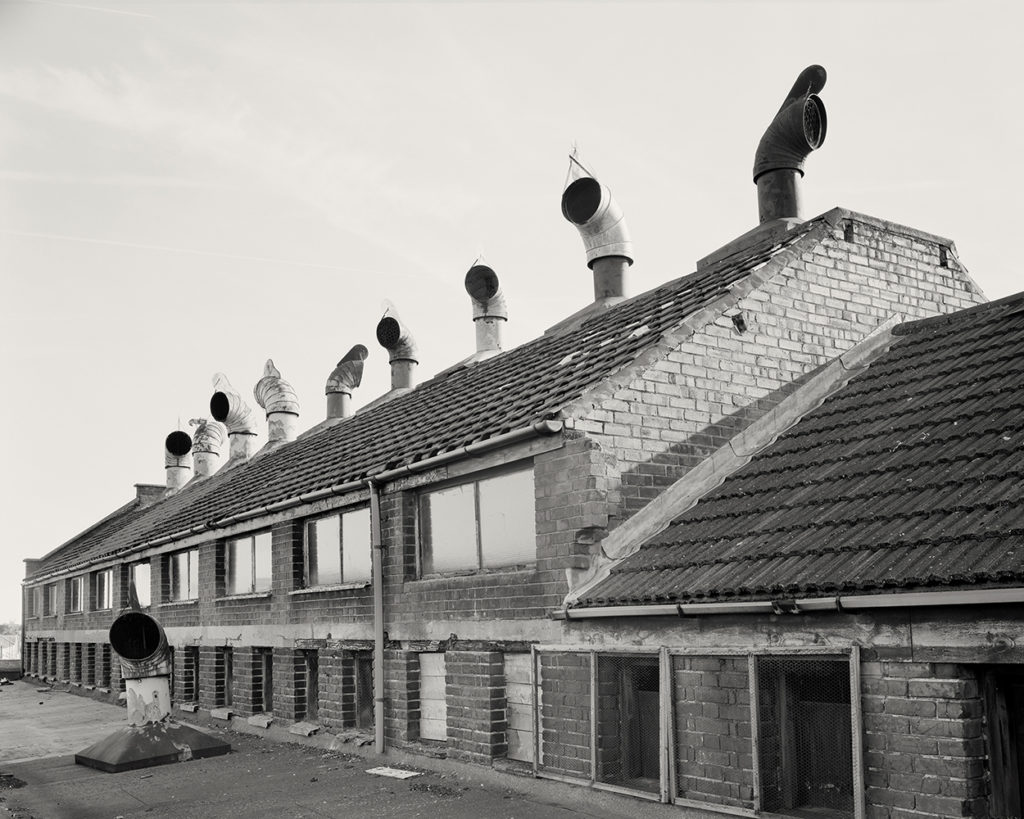
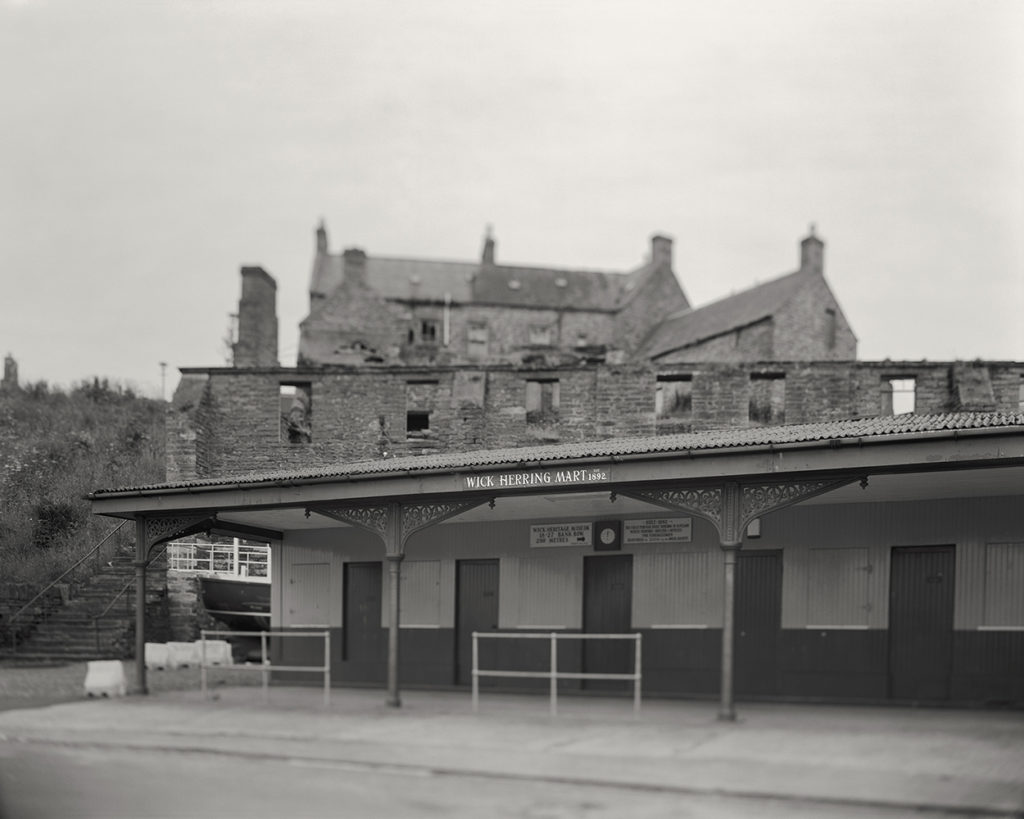
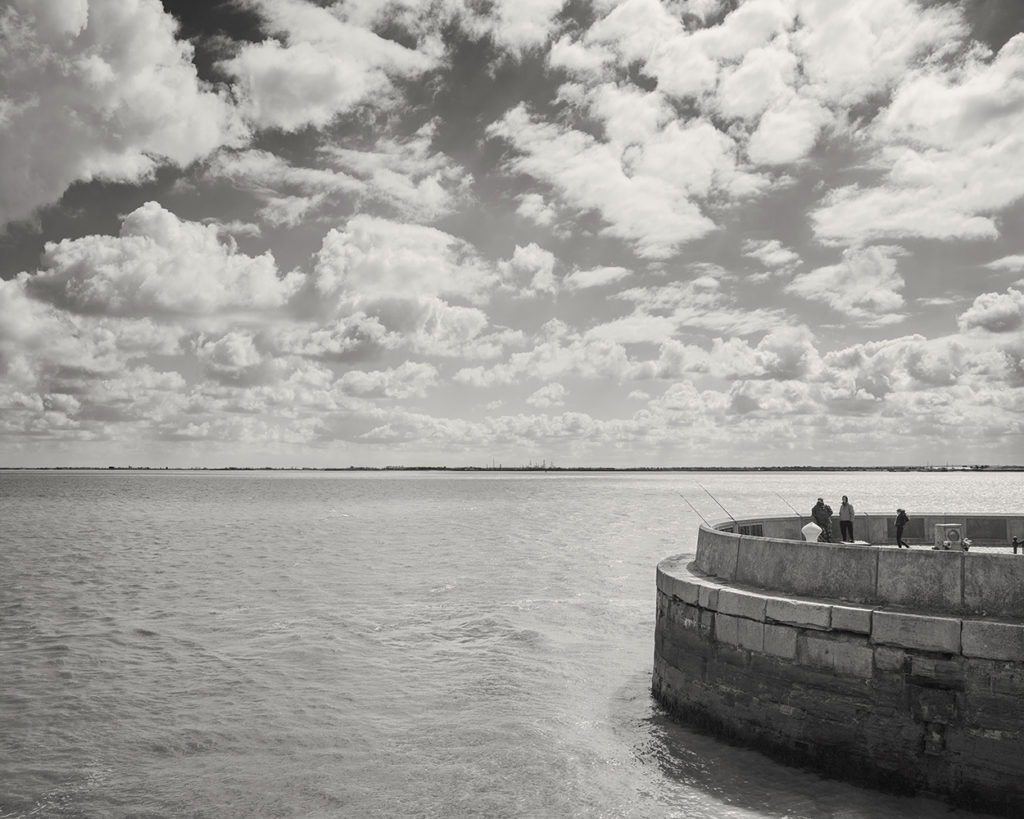
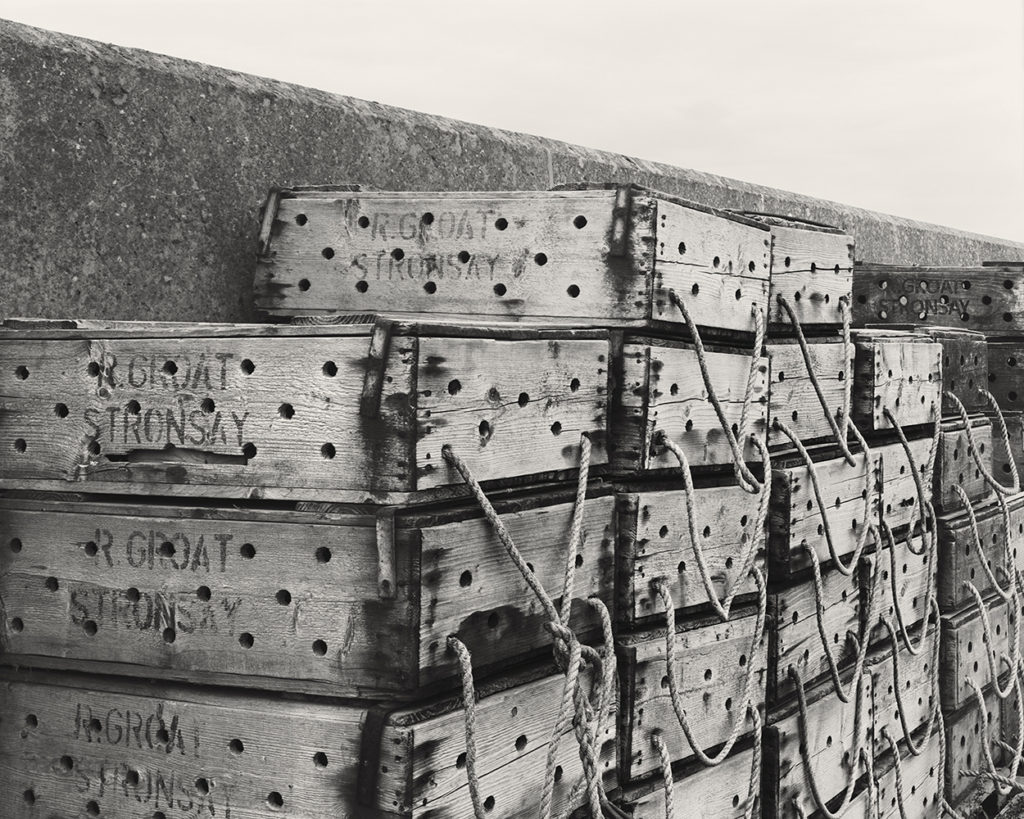

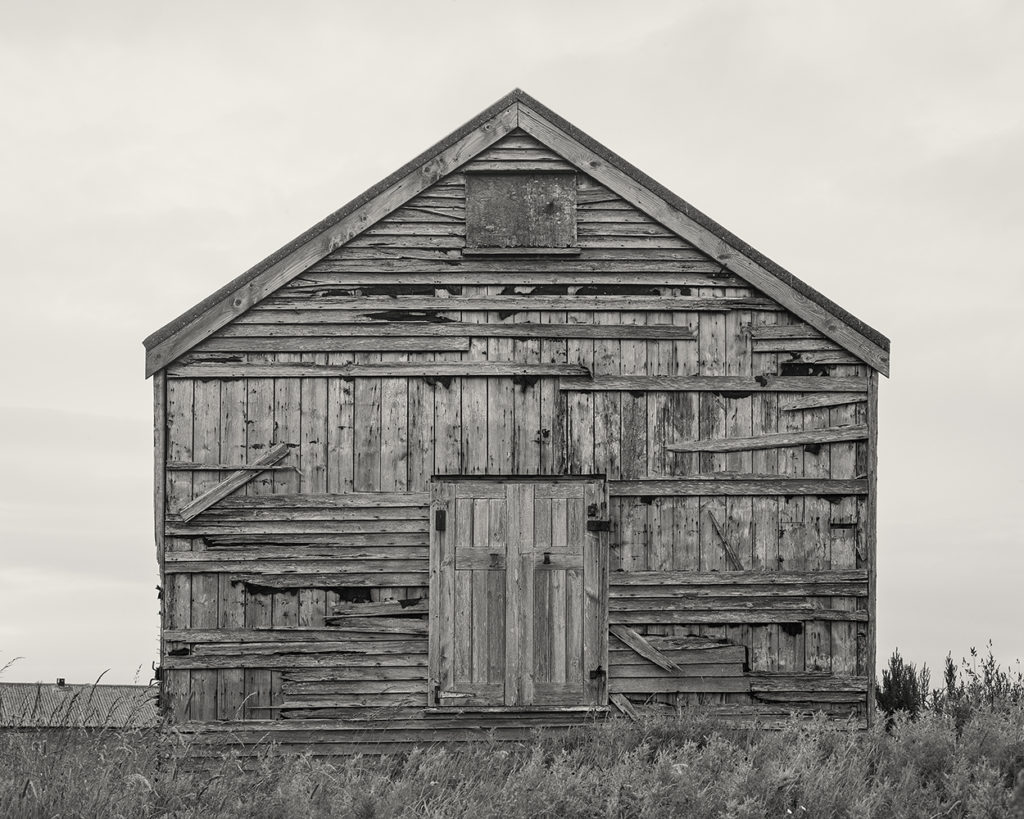
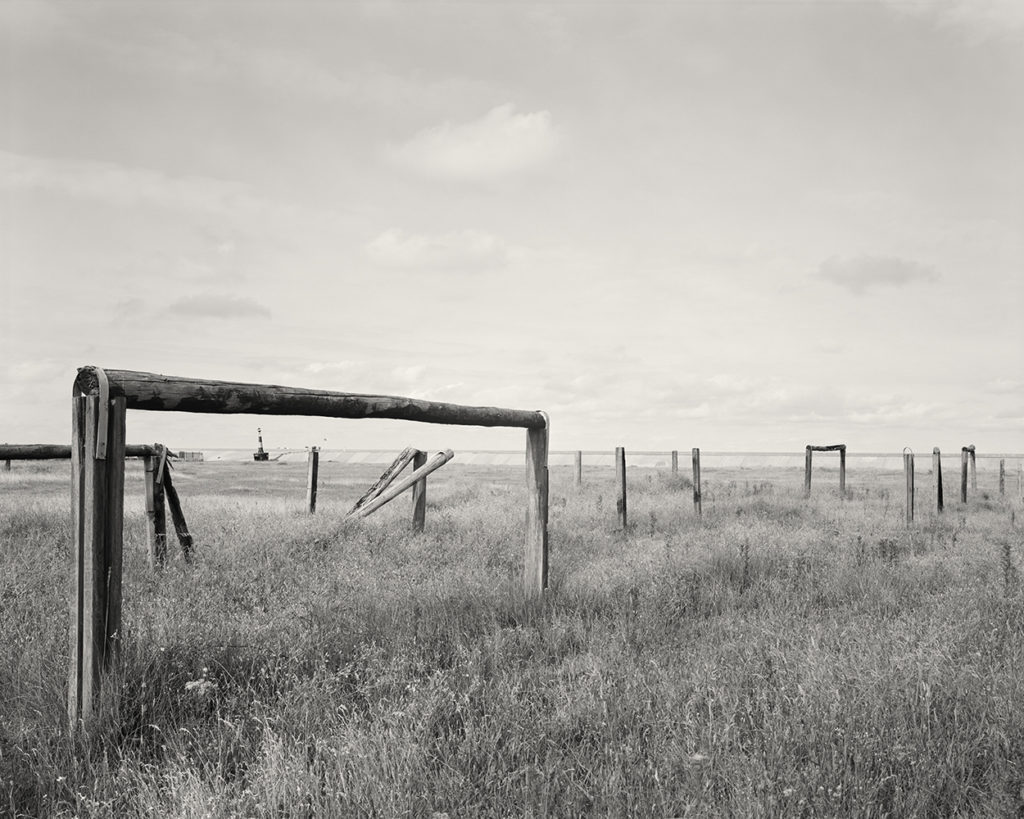


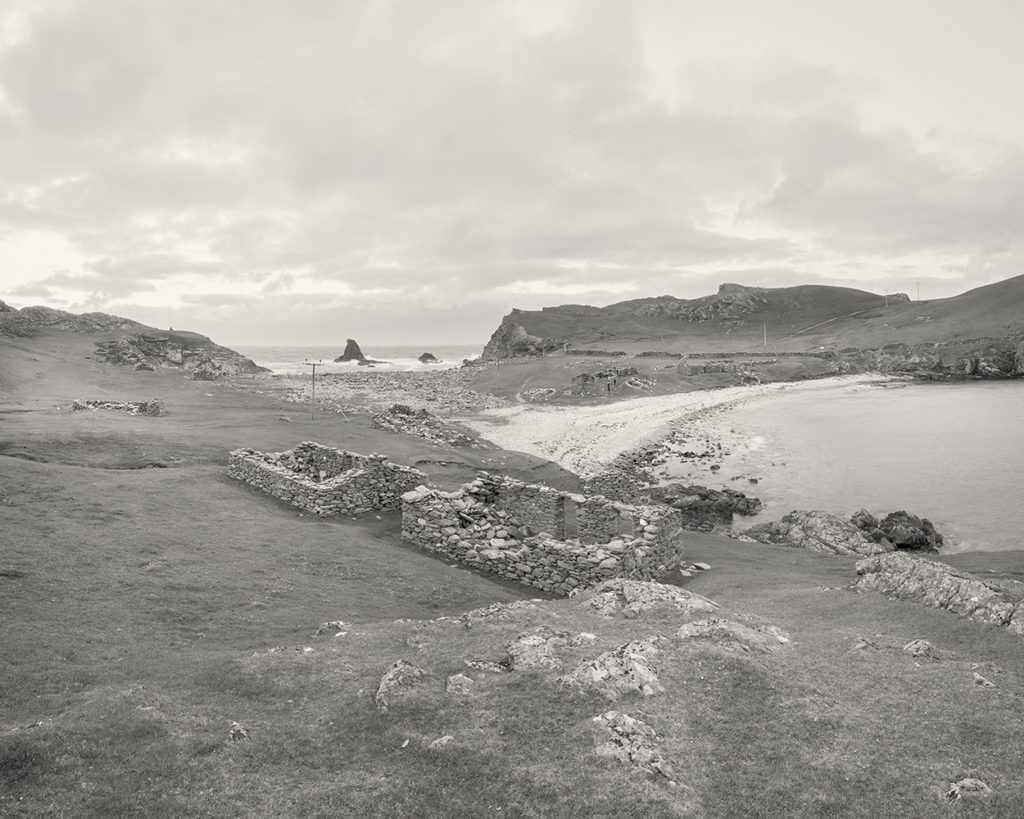
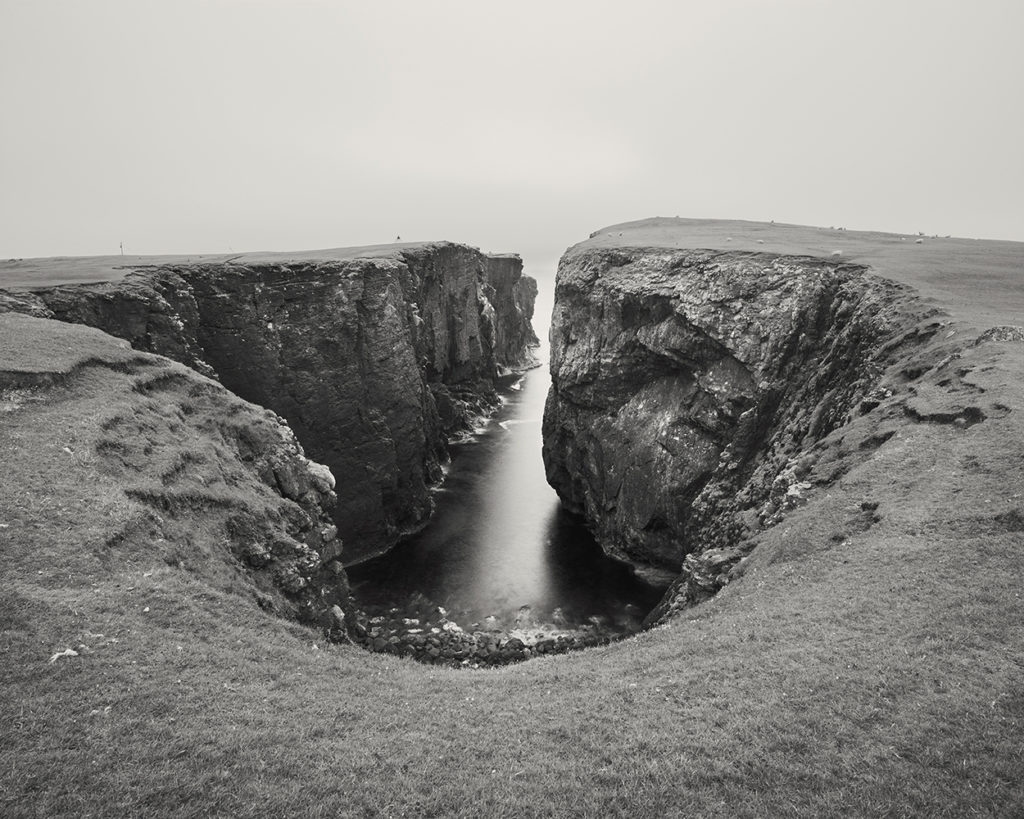

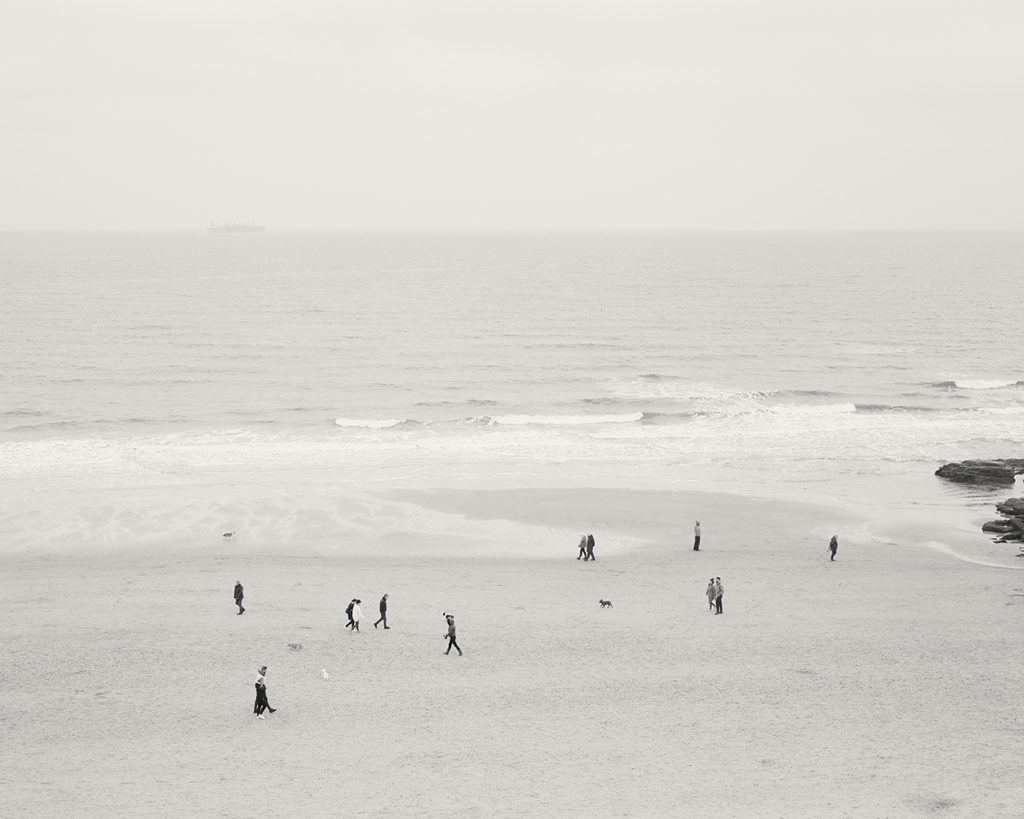

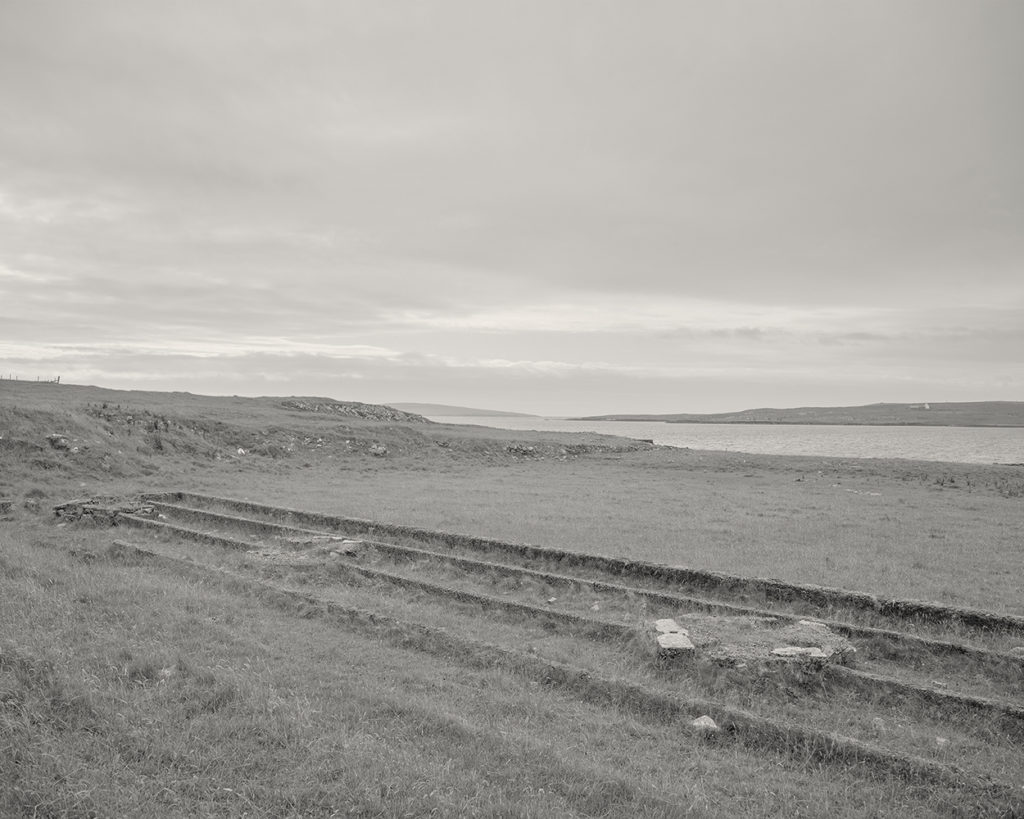
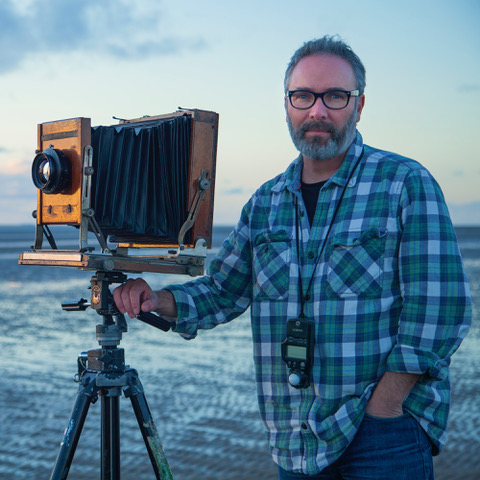
Artist’s portrait © Craig Easton, 2019
About Craig Easton
Craig Easton is a Scottish photographer known for exploring identity and connection to place in the documentary tradition. His early career was defined by his groundbreaking Independent newspaper in London, and he has since gone on to win numerous international awards including the Cutty Sark Award for World Travel Photographer of the Year 2012/13, as well as the Landscape award at Travel Photographer Award of the Year 2016/17. Most recently, he was named 2021 Photographer of the Year by the World Photography Organization for his series Bank Top.
Acerca de Craig Easton
Craig Easton es un fotógrafo escocés conocido por explorar la identidad y la conexión con el lugar en la tradición documental. Su carrera inicial fue definida por su innovador periódico Independent en Londres, y desde entonces ha ganado numerosos premios internacionales, incluido el Premio Cutty Sark al Fotógrafo de Viajes Mundiales del Año 2012/13, así como el premio Paisaje en el Premio Fotógrafo de Viajes. del año 2016/17. Más recientemente, la Organización Mundial de Fotografía lo nombró Fotógrafo del Año 2021 por su serie Bank Top.
